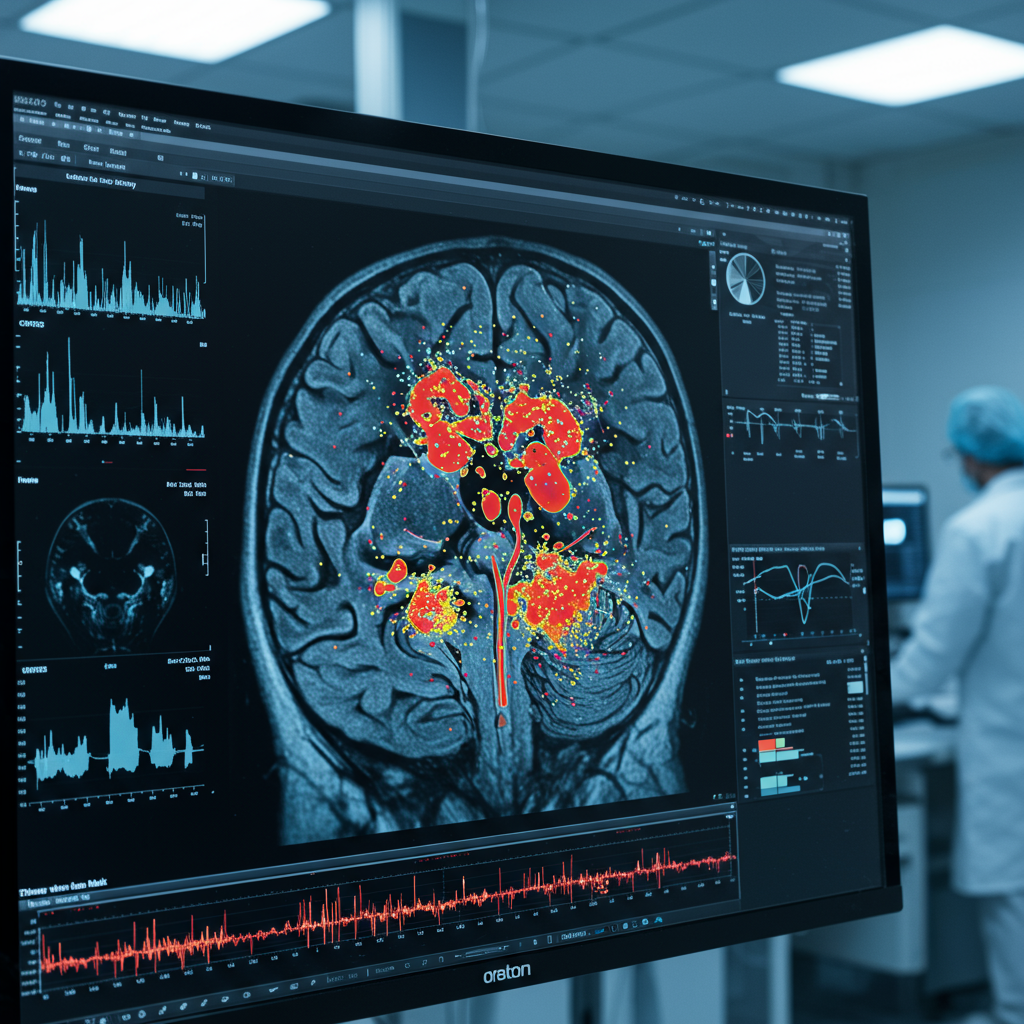Could a single brain scan reveal how fast you’re aging and even predict your future health? Researchers have developed a powerful new tool, the Dunedin Pace of Aging Calculated from NeuroImaging (dunedinpacni), that does just that. By analyzing structural patterns in a single brain MRI, DunedinPACNI provides a unique estimate of an individual’s biological aging rate. This innovative measure has shown remarkable accuracy in identifying people at higher risk for cognitive decline, dementia, chronic diseases, and even mortality years in advance. It represents a significant step towards proactive health monitoring and potentially earlier intervention strategies against age-related conditions.
Understanding Your Biological Aging Pace
We all know that chronological age – the number of years we’ve been alive – doesn’t tell the whole story of health. Some people seem to age faster than their peers, experiencing functional decline and developing diseases earlier. This variation highlights the need for better measures of biological aging rate, not just static age.
Scientists have sought ways to quantify this internal pace. Early attempts included “epigenetic clocks,” which estimate age from DNA changes. While useful, first-generation clocks trained only on chronological age weren’t great at predicting actual health outcomes. Later versions improved by incorporating health data, but often relied on cross-sectional snapshots rather than tracking individuals over time. This cross-sectional approach can mix true aging rate with other factors like historical environment or disease effects.
A more robust approach involves longitudinal studies, following the same people over many years. The groundbreaking Dunedin Study, which has tracked over 1,000 individuals born in 1972-1973 since birth, is a prime example. By repeatedly measuring various biomarkers across multiple organ systems (like cardiovascular, metabolic, renal, immune) over decades, researchers developed a robust measure: the longitudinal Pace of Aging. This score captures how quickly an individual’s biological systems are deteriorating over time.
Introducing DunedinPACNI: A Novel Brain Biomarker
While the longitudinal Pace of Aging and measures like DunedinPACE (derived from epigenetics) are valuable, they require specific biological data (blood, DNA) that isn’t always available in research cohorts, particularly neuroimaging studies. This presented a challenge for researchers focused on brain health.
Enter DunedinPACNI. This innovative tool was specifically developed to estimate this well-established longitudinal Pace of Aging score, but using only data from a single brain MRI scan. Researchers trained an elastic net regression model on T1-weighted MRI scans collected from Dunedin Study members at age 45. The model analyzed 315 different structural features of the brain, including the thickness and surface area of the cortex, gray matter volume, signal intensity ratios, and volumes of subcortical structures and ventricles.
By training the model to predict the gold-standard longitudinal Pace of Aging, derived from years of multi-organ data, DunedinPACNI aims to capture a fundamental biological aging process reflected in brain structure. This approach differs significantly from measures trained solely to predict chronological age from brain scans (often called “brain age gap”), which can be less sensitive to true individual aging rates.
How DunedinPACNI Was Validated
Developing a new biological measure requires rigorous testing. The researchers put DunedinPACNI through several validation steps:
Internal Validation: Within the Dunedin Study group where it was developed, DunedinPACNI scores correlated significantly with the original longitudinal Pace of Aging. Importantly, faster DunedinPACNI scores showed the same associations previously seen with the Pace of Aging – including worse balance, slower gait, reduced strength, poorer coordination, worse self-reported health, and even looking older. This confirmed it accurately captured the intended aging signal.
External Validation: To see if the tool generalized, it was applied to large, independent datasets from the Alzheimer’s Disease Neuroimaging Initiative (ADNI), the UK Biobank (UKB), and the Latin American Brain Health Institute (BrainLat). These diverse cohorts allowed testing in different age ranges and populations.
Reliability: Using repeat MRI scans from the Human Connectome Project (HCP), DunedinPACNI demonstrated excellent test-retest reliability, meaning a person’s score is consistent over time if their aging rate hasn’t changed, which is crucial for any measure intended to track a stable characteristic.
What Your DunedinPACNI Score Reveals About Health
The true power of DunedinPACNI lies in its ability to predict health outcomes. The validation studies across ADNI, UKB, and BrainLat revealed striking associations:
Predicting Cognitive Decline and Dementia Risk
A key finding is the link between faster DunedinPACNI and brain health. In ADNI and UKB datasets:
Higher DunedinPACNI scores were consistently associated with worse performance on a wide range of cognitive tests assessing memory, processing speed, and executive function.
In ADNI, faster DunedinPACNI distinguished individuals who were cognitively normal from those with mild cognitive impairment (MCI) or diagnosed dementia.
Most critically, for individuals starting with no cognitive impairment or only MCI, a faster baseline DunedinPACNI score significantly predicted a higher risk of converting to MCI or diagnosed dementia in the future. These “fast agers” also tended to develop cognitive symptoms earlier. This predictive ability held even when accounting for APOE ε4 status, a known genetic risk factor for Alzheimer’s.
The tool also predicted accelerated shrinkage of the hippocampus, a brain region vital for memory formation that is significantly impacted in Alzheimer’s disease.
This means a single brain scan could potentially identify individuals years or even decades before they show outward signs of cognitive trouble, allowing for potential preventive strategies.
Forecasting Broader Health Outcomes
The predictive power of DunedinPACNI extends beyond the brain, reflecting its training on whole-body aging data. In the large UK Biobank dataset:
Faster DunedinPACNI scores were associated with greater physical frailty and poorer self-reported overall health.
Individuals with higher scores had a higher lifetime prevalence of age-related chronic diseases, including heart attacks, COPD, stroke, and dementia.
During follow-up, faster agers were significantly more likely to develop new chronic illnesses.
Perhaps most starkly, higher DunedinPACNI scores strongly predicted an increased risk of all-cause mortality during the study period. Those with the fastest aging rates showed a markedly higher risk of death compared to their peers with slower rates.
These findings suggest that brain structure, as captured by DunedinPACNI, is intimately linked with systemic biological aging and overall health trajectory across the body.
DunedinPACNI vs. Traditional Brain Aging Measures
How does DunedinPACNI compare to existing neuroimaging measures like the “brain age gap”? While both are derived from brain scans, they represent different concepts and have different predictive capabilities.
Brain age gap measures the difference between a person’s predicted brain age (based on training on chronological age) and their actual chronological age. A larger gap is often interpreted as accelerated brain aging. However, as noted earlier, this can be influenced by factors unrelated to the underlying aging rate.
DunedinPACNI, in contrast, is trained to predict a longitudinal measure of the pace of multi-organ biological aging. It’s not aiming to guess chronological age.
The studies showed that DunedinPACNI and brain age gap were only modestly correlated, indicating they capture distinct aspects of brain health and aging. Crucially, DunedinPACNI often showed similar or even stronger statistical associations with various health outcomes compared to brain age gap or simple structural measures like hippocampal volume. Furthermore, using both DunedinPACNI and brain age gap together often improved the prediction of health outcomes, suggesting they provide complementary information.
This difference in predictive power likely stems from DunedinPACNI being grounded in a robust, longitudinal measure of systemic aging, making it potentially a more clinically relevant biomarker for overall health trajectory.
Potential Impact and Future Directions
The development of DunedinPACNI holds significant promise for future research and potentially clinical applications. By providing a reliable and generalizable estimate of longitudinal biological aging from a single, readily available brain scan, it offers a powerful tool for scientists studying aging and age-related diseases.
Early Identification: It could be instrumental in identifying individuals at high risk for dementia and other chronic illnesses years before symptoms manifest, allowing for earlier interventions and lifestyle modifications.
Intervention Evaluation: The tool can help researchers test whether various interventions – from lifestyle changes like diet and exercise to potential new therapeutics – are effective in slowing the pace of biological aging.
Understanding Risk Factors: Researchers can use DunedinPACNI to explore how behavioral and environmental factors, including sleep quality, mental health, socioeconomic status, and environmental exposures, influence an individual’s biological aging rate as reflected in brain structure. The tool’s performance across diverse populations in the validation studies (including Latin America and lower socioeconomic groups) suggests its applicability is broad.
While currently a research tool, the developers have made the algorithm publicly available to facilitate widespread use and further validation. Before it could be used in clinical practice, more research is needed, including establishing normative values for different populations. Nevertheless, DunedinPACNI represents a significant leap forward in our ability to measure individual aging rates from a non-invasive brain scan, paving the way for a deeper understanding of healthy aging and targeted strategies to mitigate age-related decline.
Frequently Asked Questions
What is DunedinPACNI and how is it different from other aging measures?
DunedinPACNI is a new research tool that estimates a person’s biological aging rate, or “Pace of Aging,” using data from just one brain MRI scan. It’s different from traditional brain aging measures (like brain age gap) because it was trained on longitudinal data from the Dunedin Study, predicting a score based on how quickly multiple biological systems declined over two decades, rather than simply predicting chronological age from brain structure. This makes it potentially more sensitive to true biological aging processes linked to future health.
What kind of health risks can DunedinPACNI predict?
Studies using DunedinPACNI have shown it can predict several important health risks years in advance. It predicts cognitive decline, including a higher risk and earlier onset of mild cognitive impairment and dementia. Beyond brain health, faster DunedinPACNI scores are associated with increased physical frailty, a higher likelihood of developing chronic age-related diseases (like heart attack, stroke, and COPD), and a significantly increased risk of death.
Is DunedinPACNI available for use outside of research studies?
Currently, DunedinPACNI is primarily a research tool. The algorithm has been made publicly available to researchers to facilitate further study and validation in diverse populations. While it shows great promise for future clinical applications, such as identifying high-risk individuals early or tracking the effectiveness of anti-aging interventions, it is not yet available for widespread use in standard healthcare settings. More research and normative data are needed before it can be integrated into clinical practice.



